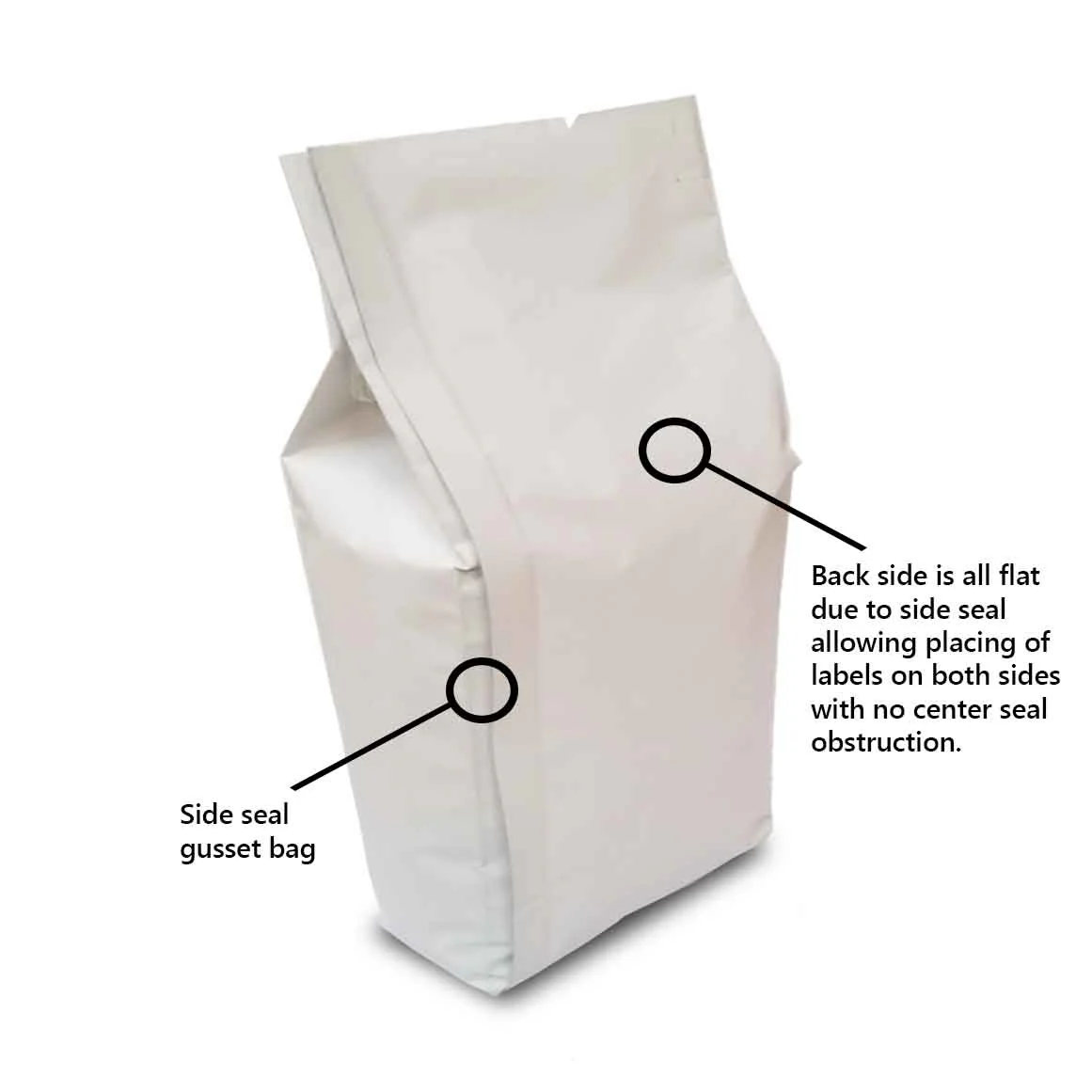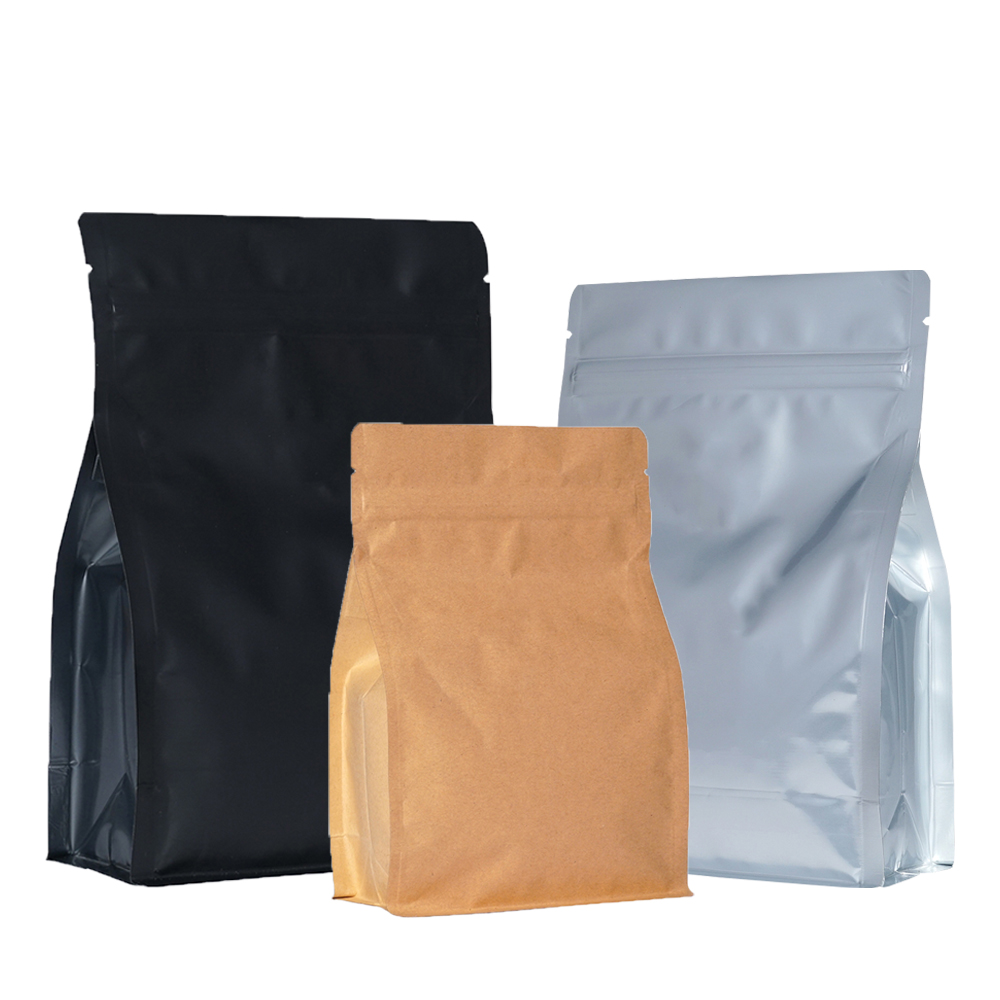What is a Gusseted Bag? A Guide to Types and Functions
In today's competitive retail world, packaging is more than just a container — it's an important part of the brand experience, product protection, and shelf appeal. People like packaging that is both useful and looks good, while businesses need packaging that keeps products safe and makes shipping easier. Gusseted bags are a good choice for brands that need this balance — they are both flexible and effective.
At MTPak, we make custom gusseted bags that are high quality. They satisfy these difficult needs. We use the best materials and new printing techniques for our customers in various markets like specialty coffee and pet food. This article will describe gusseted bags. It will introduce the various kinds you can find, and it will show you how to select the best one for you.
What Does Gusset Mean in a Bag?
The term "gusset" comes from French long ago. It referred to armor that shielded a knight's underarm in battle. Now in packaging, a gusset works much the same way— it helps protect and adds function. It is an extra material panel—a fold or pleat. It is attached to the sides or bottom of a bag.
This design feature allows the bag to get wider. It adds depth and increases how much the bag can carry. It also makes the bag more stable. A gusseted bag isn't flat; it can stand upright and support what's inside more effectively.
What is a Gusseted Bag?
A gusseted bag is a flexible pouch. It has built-in side or bottom gussets. This design gives clear structural benefits. It has a higher volume-to-weight ratio. The bag can hold more stuff. But it does not use much extra material. This makes it more efficient.
The expanded panels offer plenty of space. That means you have extra room to show off your branding and product details on both sides. Also, the bag can stand by itself. This improves shelf visibility and stability. These features work well for retail. Product presentation matters there.
What are the Main Types of Gusset in Bags?
Gusseted bags don't work for everyone. The bag's shape, function, and best-use applications depend on where the gusset is placed and how it looks. There are two main types of bags: side gusset bags and bottom gusset bags.
Side Gusseted Bags
The side gusseted bag is a common type. It has gussets on its sides. When you fill the bag, these gussets push out. This makes the bag look like a tube.
Key features of this bag are:
• Sleek Design: It usually has one seal on the rear. This gives a full area for visuals with the brand name.
• Space Efficiency: When full, its depth increases a lot. So it can carry more items while taking up less space on the shelf.
• Versatile Uses: It is often used to package coffee beans, tea, bulk snacks, and pet food, as it is cheap and useful.
While a side gusset bag seems flat before it is filled, its attractive shape and large printing area make it a popular choice for many brands.
Bottom Gusseted Bags
A bottom gusseted bag, also known as a stand-up pouch, has its gusset construction at the base, allowing it to stand securely upright when filled. You may also group bottom gusset bags by the type of seal on the bottom:
Flat Bottom (Box Pouches)
Flat bottom bags have a wide, reinforced gusset that forms a stable rectangular base. This design makes it easy for the bag to stand up straight, and it is more visible on shelves with a high-end, structural look. This is great for retail items that need to look good in a big way.
K-Seal Bottom
The K-seal design folds the gusset into a "K" shape, which makes a strong base. It can help keep things like coffee or snacks that are medium-weight from falling over. The stronger structure keeps it from falling over and makes it easier to stack.
Round Bottom
The round bottom bags include a curved, semi-oval gusset that makes it easier to package powder and other small items. The smooth base keeps residue from sticking and makes sure the filling is always the same. It works great for little goods like sugar, flour, candy, and more.
What Materials are Used for Gusseted Bags?
Most gusseted bags are made of plastic, such as Polyethylene (PE) and Polypropylene (PP), as they are cheap and keep moisture out well. These materials are great for packing snacks, dry items, and frozen foods which need simple protection and visibility.
For special needs, laminates give better oxygen and light blocking. They help protect sensitive items like coffee. There are also green options like kraft/PLA composites and compostable films. These meet the needs of earth-friendly brands packing organic foods or high-end goods. Picking a material depends on your product needs and environmental goals.
The following table summarizes common materials and their properties.
| Material | Key Properties | Common Uses |
|---|---|---|
| Polyethylene (PE) | Moisture proof, durable | Dry goods, frozen foods |
| Polypropylene (PP) | Transparent, heat resistant | Snacks, baked goods |
| Laminates | Custom barriers, strong | Coffee, medical supplies |
| Kraft Paper+PLA | Compostable, natural | Gourmet foods, coffee |
| Recycled Polymers | Eco-friendly, circular | Various products |
| Compostable Films | Biodegradable, certified | Organic foods, fresh |
How Do I Choose the Right Gusseted Bag for My Product?
Choosing the best gusseted bag means carefully thinking about what your product needs and what your brand wants to achieve. To make a smart choice, think about these things:
• Features of the Product: The most important things about your product are its weight, uniformity, and how easily it breaks — a strong bottom gusset bag with strong seals is needed for heavy, rough things like pet food; a classy side gusset bag is suitable for light tea leaves.
• Requirements for Barriers: Does your product need a strong barrier against oxygen (OTR) and moisture (WVTR)? Polyethylene (PE) is a great material for keeping moisture out, and laminates that include EVOH are even better at keeping oxygen out to keep things fresh, which is important for coffee and snacks.
• Branding and Shelf Presence: Think about how you want people to see your goods. A flat-bottom box pouch gives off a high-end, luxury look and has plenty of room for branding. A side-gusset bag, on the other hand, has a more traditional, craft-oriented look.
• Goals for Sustainability: More and more people choose eco-friendly options. MTPak sells recycled PET (rPET), polylactic acid (PLA), and compostable films that meet international standards including ASTM D6400. Third-party certificates should back up any promises like "home compostable."
Conclusion
Gusseted bags are a perfect mix of style and function, making them the most flexible way to package products. They are a smart choice for brands in many industries since they make shelves look better by being able to stand up and protect things better with modern material science.
At MTPak, we utilize our knowledge of flexible packaging to help you choose the right one. We use the latest printing technology with materials in a way that is good for the environment to make custom-printed gusseted bags. This way, your packaging is not only effective, but it also fits with modern environmental ideals. Call our packaging experts today to get an estimate and find out how we can help you make your product idea a reality.
Email:account@mtpak.com
Contact us:https://mtpak.com/contact-mtpak
What Are the Frequent Questions about Gusseted bags?
1. What is the difference between a gusseted bag and a regular bag?
Gusset bags hold more — plain and simple. Their expandable sides let you pack in more product (and handle heavier items) compared to flat bags. But the real win? That extra space isn’t just for capacity. It gives your branding, product details, and nutritional info room to breathe — making it way easier for shoppers to see what makes your product special without digging through the shelf.
2. What is the difference between a side gusset and a bottom gusset bag?
A side gusset makes the bag wider, which is great for flat, stacked items. The bottom gusset lets the bag stand up on its base, which makes it more stable and gives heavier products a better shelf presence.
3. Are stand-up pouches and gusseted bags the same thing?
All stand-up pouches are a type of gusseted bag (specifically, they have a bottom gusset). However, not all gusseted bags are stand-up pouches, as side gusset bags may not stand upright on their own.






